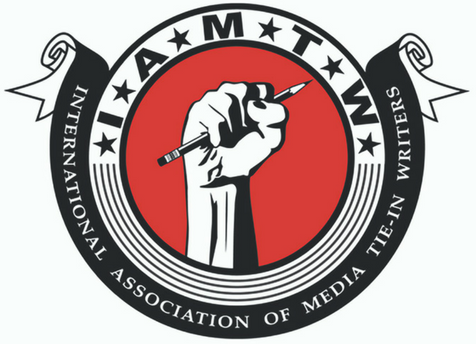The Spin-Off Doctors
Sydney Morning Herald Article on Tie-Ins (1/1/05)
Novels based on a popular TV series or movie have a built-in audience,
but are they literature, wonders Mark Juddery.
In the world of science fiction, few Australians enjoy such critical
acclaim as Adelaide writer Sean Williams. As United States-based
reviewer Cheryl Morgan has suggested, “He deserves to be famous.” Of
Williams’s 19 books, however, the best selling are perhaps the least
prestigious: four paperback Star Wars novels, penned with his
occasional collaborator, Shane Dix.
Original novels, based on characters in movies and TV series, have
usually sold well, from 25-cent Dragnet detective fiction to bawdy
Number 96 paperbacks. Star Trek, Buffy and CSI novels still cover the
shelves.
Science-fiction aficionados have dismissed such tie-ins as the Mills &
Boon novels of the genre. Nonetheless, the Star Wars novels placed
Williams and Dix in The New York Times paperback bestseller list.
Despite the literary acclaim, Williams sees no dilemma. “As soon as
the words ‘possible Star Wars deal’ came out of my agent’s mouth, I
said, ‘Yes, I would really like that.’ I don’t care if I’m writing
literary novels. The 10-year-old in me would just be so excited to be
writing stuff for Luke Skywalker.”
The growing list of Star Wars novels are original stories, but closely
aligned to the continuity of the movies. “I knew I wasn’t trying to
write a literary masterpiece,” Williams says, “[but] I don’t think you
can write them off. The value of a J.M. Coetzee book is different to
the value of a Star Wars book, but there’s still some value. A vast
number of sales in the science-fiction genre come from books like this.”
Other authors have a high regard for tie-in novels. “The Terminator
franchise is distinctive for its strong characters, its sinister
iconography and a certain bleak tone,” says Russell Blackford, who
wrote the first three novels in the Terminator series, set after the
second movie.
“I wanted to be true to all that, but not produce a mere imitation
with nothing new to offer. There needed to be material that would give
readers a different experience.”
For Garth Nix, this is still a poor substitute to one of the
science-fiction writer’s great joys: building your own universe from
scratch.
Nix found it “extraordinarily difficult” to write the first X-Files
novel in 1997, adapting a television episode based on another writer’s
script. “Too much is set out. Even if you get a chance to write an
original novel – and some of the Doctor Who novels are very highly
regarded – you are very limited in what you can do.”
Doctor Who novelists might disagree. In 1991, two years after the
television series was cancelled, Virgin Books began a series of young
adult novels billed as “stories too broad and too deep for
television”. It provided everything from dark, post-apocalyptic
fantasy to Terry Pratchett-style goofiness, and alienated several
long-term fans in the process. “They’re ‘only’ TV spin-offs, of
course, but they’re easily the best in the genre,” Britain’s SFX
magazine announced in 1996, suggesting that the “open-door policy” on
submissions made it “the last, best hope for new SF [science fiction]
talent in British publishing”.
Among the new writers was Sydney graphic designer Kate Orman, who had
previously edited a fanzine of Doctor Who short stories. With The
Left-Handed Hummingbird (1993), she became the first woman, and the
first non-British author, to pen a Doctor Who novel. Since 1996, the
Doctor Who series has been published by BBC Books, still aimed at the
same market. “A lot of fans were worried the books would be ‘dumbed
down’, or aimed at much younger readers, but that didn’t happen,”
Orman says.
One Doctor Who novella, Fallen Gods, written by Orman and her husband,
Jonathan Blum (and published, under licence, by British small press
publisher Telos Publications), was named Best Australian Science
Fiction Novel at last year’s Aurealis Awards. It was the first major
science-fiction and fantasy award for a television tie-in.
More recently, Blum penned the first novel in Powys Books’ new
TV-based series, The Prisoner. It presented an even greater challenge.
The Prisoner, a ’60s series created by actor Patrick McGoohan, was
arthouse television. “Just going over the same territory as the old
show would be too obvious,” Blum says. “You need to have something new
to say.”
Blum is quick to defend tie-in novels. “People are prejudiced against
tie-ins because they figure that it’s cheating if you write stories
about characters you didn’t create. Well, there goes a huge swathe of
literature from Shakespeare to Jasper Fforde. If you can write
something as lovely and enduring as The Night Before Christmas as a
tie-in with a pre-existing fantasy character, there’s no reason you
can’t do something as good with Doctor Who.”
View the article here.
